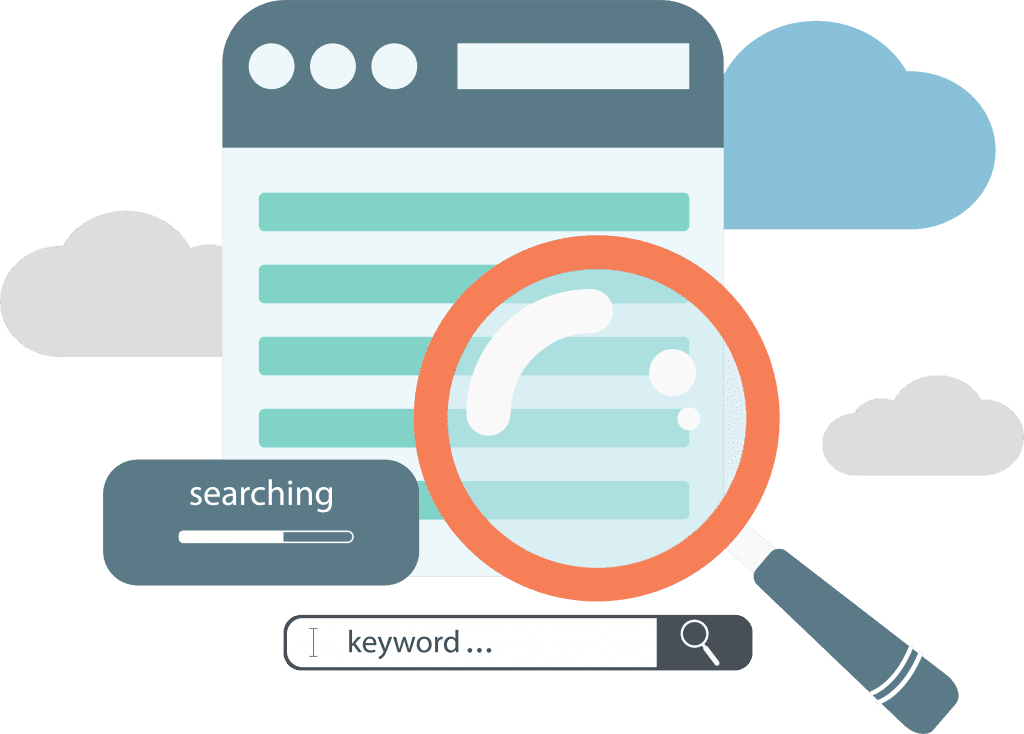Understanding Search Engine Optimization
What is Search Engine Optimization?
Search engine optimization, or SEO, improves a site’s visibility and traffic by making it readily findable in search engine results. An effective SEO strategy has two key targets: the right amount of customers and the right kind of customers. One goal focuses on sheer numbers; you want many people to discover and visit your site. The other goal revolves around attracting the right kind of people to your site. You want visitors who are generally interested in your information or products.
Ad or SEO?
SEO and digital advertisements serve similar goals; however, they’re not the same thing. Digital ads come with a price tag, while an effective SEO strategy generates organic traffic to your site. It’s the difference between the sponsored ads that pop up in your web browser and the top results that your search engine returns after a quick keyword search. Both are invaluable tools for attracting visitors and improving visibility, but a solid SEO strategy comes with an obvious benefit: it generates traffic for a lot less cost.
The goal of this guide is to introduce you to the basics of Search Engine Optimization. We’ll cover why it’s important to your customer, how to use it effectively, and how it can benefit your company. First, however, it’s essential to understand the customer journey as it relates to SEO.
SEO and the Customer Journey

The customer journey is the trip every client takes on their way to purchasing (or not purchasing) your products and services. In marketing terms, the acronym that helps describe this journey is A.I.D.A.: attention, interest, desire, and action.
SEO is a great way to connect with customers at each stage of this journey organically. In today’s internet-driven world, most people turn to their search engines when looking for answers to any of their problems. A focused SEO strategy helps ensure that your results are there at each step of the journey, guiding them through three key areas: identifying their problem, finding the solution, and connecting it to a particular product.

- Problem
At this stage, your potential customer is becoming aware of their problem. It could be that their flowerbeds are getting flooded. Maybe they’ll search for “what causes yard flooding.” Imagine you’re a company that specializes in gutter cleaning—you know that leaky gutters can often cause flooding in flower beds, so you’ll want to make sure you have articles and results on the topic to draw your client in. - Solution
At this point, your client has pinpointed what their problem is: in this case, a leaking gutter that needs help. Now it’s time to guide your client to the specific solution they need. Here the customer might search “how to fix leaky gutters.” You’ll want to have search results that fit this description, explaining why a gutter cleaning service is the best choice for a reliable fix. - Product
Now your prospective customer has identified their problem, and they know the general solution. The final step is the specifics. You don’t want the client to choose just any gutter cleaning service—you want them to choose your service. So when the customer searches “best gutter cleaners in my area,” you’ll want to have content on the merits of your service, testimonials from clients, and comparisons between your service and the service of other nearby companies.
All through this journey, a good SEO strategy can lead your client from one step to the next, bringing each search query to helpful information on your site. If you’ve crafted your strategy well, your client may never even need to conduct the last search, “best providers of X in my area”–they’ll already have found everything they need on your website.
The Basics of SEO

How does it work?
When you input something in a search engine, such as Google or Bing, the engine sends out a “crawler” that combs the internet looking for relevant content.
This content is then used to build an index, which runs through an algorithm that matches content to your search. Search Engine Optimization, or SEO, makes sure your website gets chosen by that algorithm in as many scenarios as possible.
There are several key areas that SEO specialists target when optimizing a site or page. The first is the content. Content influences what keywords search engines start ranking you for and how likely other visitors will share your content or create links to your site, which increases your authority in the space, allowing new content to rank easier.
The second is the title. This is an area where words need to be chosen carefully to ensure it grabs users’ attention. It’s crucial to craft a short enough title to be memorable but long enough to adequately describe the page and pique the reader’s interest.
Another area of focus is meta descriptions. This is the small block of text that appears underneath the title in search results. The meta description for an article should summarize information to the reader and encourage them to click. Most search engines automatically create a meta description if you don’t provide one, but a smart site owner won’t leave that up to chance—they’ll craft their own meta, focusing on catering to the ideal visitor.
URLs are another piece of a good SEO strategy. Your URL should clearly summarize your page’s key content, making it easy for algorithms to find it—or your URL can obscure your article. Good URLs include clear keywords, such as https://edgewebware.com/services/usability-testing/. Poor URLs are unclear, including obscure terms or numbers that don’t relate to the main topic of a page.
Where to start?

Evaluate your site
First, take a look at your current website. What platform do you use? How is it designed? Even the best SEO campaign won’t have much impact if your website itself is outdated or badly designed. In addition, do some Google searches and find out where your pages appear in search results. Take a look at the data—what are you doing well, and what do you need to improve on?

Keyword research
Before you start optimizing your site, you need to decide what you want to focus on. Which keywords are crucial for your business? What terms are most likely to draw clients in? You want to choose keywords that get a good level of search volume, but that aren’t out of your reach.

Start establishing your strategy
With the preliminary research done, you’re ready to start working towards search engine optimization for your site!
Benefits of SEO

You’ve got your SEO strategy in order. What are the benefits you can expect? The below examples are just a few of the advantages SEO can provide.
Creates quality traffic
Most strategies for getting customers onto your site aren’t a response to a customer’s initiation. Instead, you, the advertiser, initiate the conversation. Whether it’s an email campaign, social media ads, or cold calling, you’re the one reaching out. Sometimes this works well, but sometimes these advertisements can become annoying. SEO works because it’s centered on the client: helping them find the information they searched for as a solution to a problem they’ve identified. This type of site traffic often generates more interest because it’s tailored to the client’s specific search.
Higher close rates
According to statistics, good SEO has a 14.6% conversion rate instead of a 1.7% rate from traditional strategies such as mailers or ads.
Cost-effective
Unlike traditional ad campaigns, SEO doesn’t cost money to maintain. You don’t have to keep paying Google for ads or renewing a subscription. You’ll continue to generate strong leads simply through organic searches.